A Japanese magazine famous for wild predictions of variable accuracy says Mazda’s board of management has already signed off on its next rotary-engined sports car, determining that it will go on sale in 2020 wearing an “RX-9” badge on its shapely butt and be priced around the 8 million Yen mark (AU$104,000 at current exchange rates).
The report, published by Holiday Auto magazine and accompanied by some enticing renderings of a fat-fendered yellow coupe, also states that a 1.6-litre turbo rotary will feature under the bonnet, with roughly 300kW powering a rear-driven two-seater body weighing under 1300kg. Our first experience of it should be at next year’s Tokyo Motor Show in October according to Holiday Auto, where it will be previewed in concept form.
But how correct is the report?
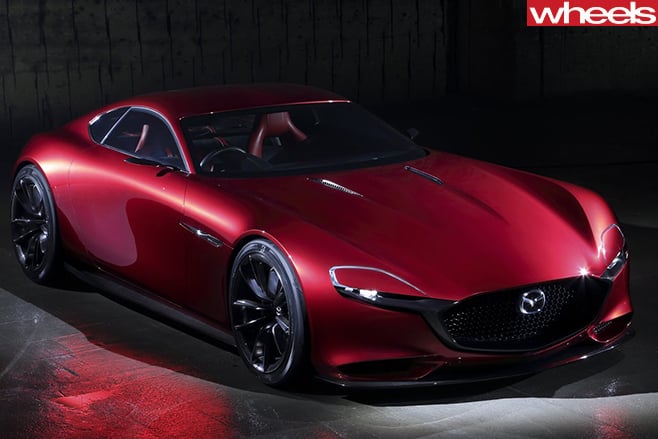
As a two-door, two-seat rotary powered coupe, there’s only one badge that’s appropriate – RX-7.
There were three generations of Mazda RX-7 over nearly three decades and they all bore the same basic configuration. When the Japanese automaker followed up the third-gen RX-7 with the RX-8, the name change was in line with the car’s increased size and its four-door, four-seat layout.
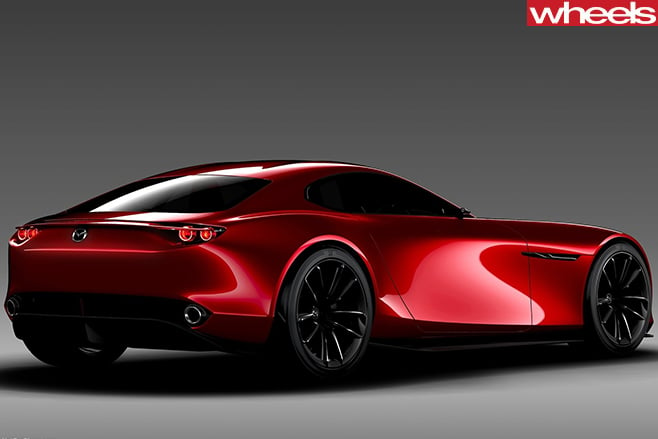
History also works against it: in the late 1970s Mazda sold a rotary-engined version of the 929 sedan in Greece and other markets as the RX-9. Transplanting the badge of a long-dead executive barge onto a sleek coupe seems a little bit off.
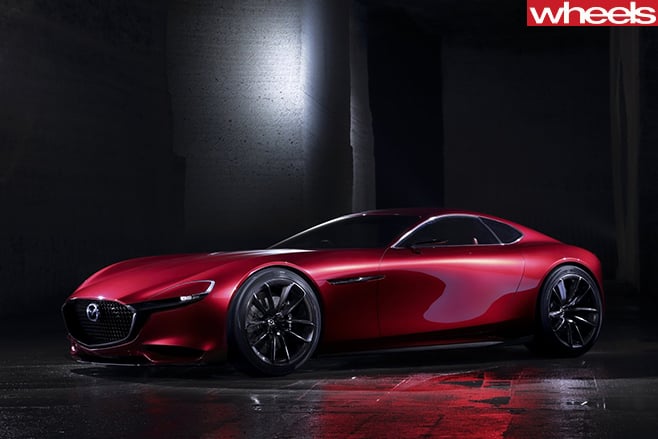
The 2020 launch timing (following a debut at the 2019 Tokyo Motor Show) also seems too far in the future. Previous rumours say the production car will show its face at the 2017 Tokyo Motor Show next October, which would be fitting considering 2017 marks 50 years since Mazda launched its first rotary-engined car, the Cosmo.

The 300kW power output in Holiday Auto’s report is speculative, but from what we already know of the next RX-7’s rotary engine it’s not out of the realm of possibility. Mazda has been honing a 1.6-litre successor to its venerable 1.3-litre two-rotor motor for over eight years now, and recent patent applications indicate that it’s on the verge of being production-ready.
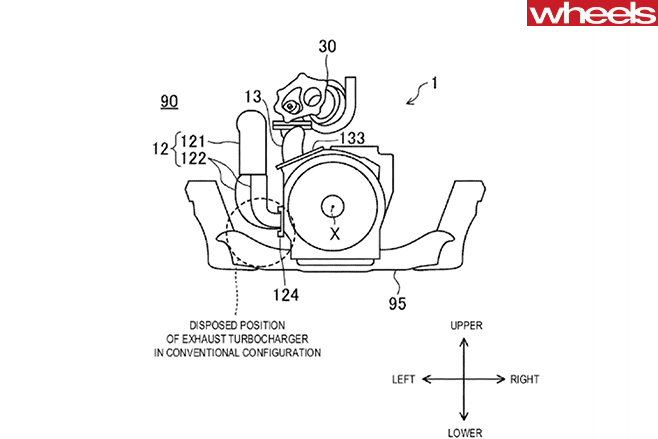
Exhaust and inlet ports have also done a switcheroo, with burnt gases now exiting at the top of the engine (and straight into the turbine housing for optimal response) and fresh air entering at the bottom (for longer intake runners to promote low-end torque).
In our recent interview with Mazda engineering maestro Dave Coleman (check it out in the August issue of Wheels, page 23), we learned Mazda’s next rotary will preference torque over revs, losing some of the high-rpm thrills that characterise rotaries but gaining some much-needed driveability and fuel economy as a result.
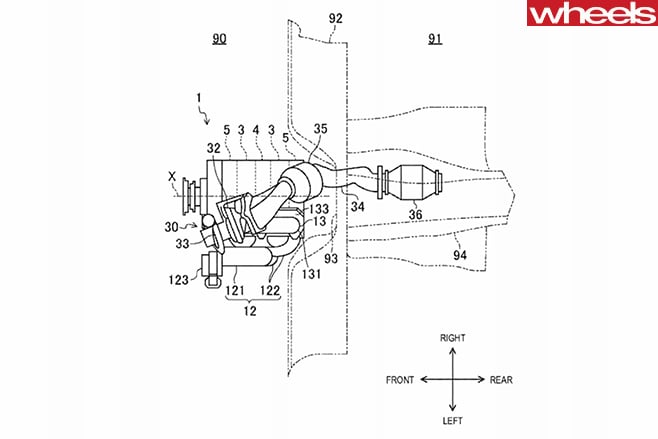
Emissions won’t be neglected either, with the new engine illustrated with two cantaloupe-sized catalytic converters behind the turbo to help scrub pollutants from its exhaust gas. Rotary engines haven’t been known for their environmental friendliness, but Mazda is determined to make its piston-less engine play nice with Mother Nature.
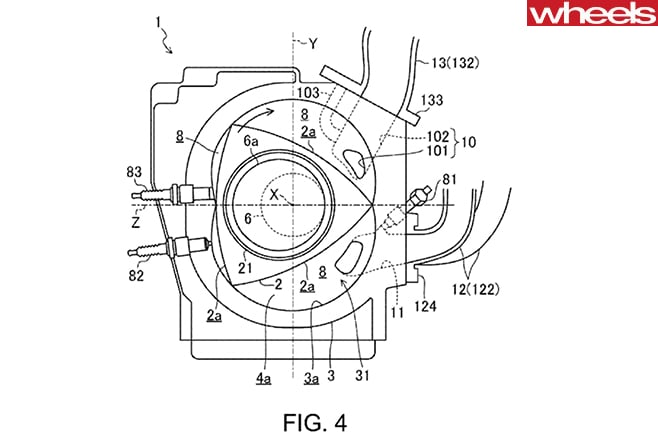
Long story short: a new rotary Mazda is coming, but it’ll most likely see the triumphant return of the RX-7 badge and it could be ready in time for next Christmas. It will be light, it will have torque, it will have a turbo and it will probably thrill the pants off you. We can’t wait.





